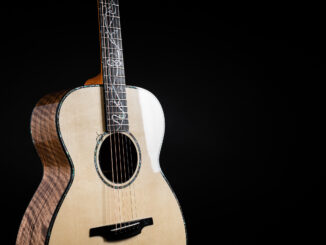The bridge on a headless guitar is where you find the heart of your instrument, tuning and configuring the tone. But what if I told you that a few tricks can help you get even more out of your headless guitar bridge? From the basic to the advanced level of using headless guitars, these five hacks on the bridge will transform how you handle your guitar. Let’s see!
1. The Ultra-Fine Tuning Trick
The primary advantage of a headless guitar bridge is that it has a micro-tuning mechanism incorporated into the bridge itself, eliminating the requirement for tuning pegs on the headstock. However, you can go a notch higher with an ultra-fine-tuning hack to achieve even better results. If you’re looking to achieve pinpoint accuracy—especially in drop tunings or microtonal settings—try this:
Hack: Apply graphite powder or a silicon-based lubricant to the string saddles and the bridge tuners. This helps you minimise contact between the strings and the tuners; thus, you can fine-tune the strings even further. With this trick, you can make small adjustments to your tuning, and the feel of your strings is far more precise, smoother and better to play.
2. Instant drop tuning with a locking bridge
Changing tunings in the middle of a set or even during practice is a pain when it comes to traditional guitars, but a headless guitar bridge makes it possible – if you understand how. If you set it up a little bit, you can have your headless guitar drop tunings at the flick of a switch.
Hack: If your headless guitar has a locking bridge, use it with a quick-release tuning peg system. Tune your tuners in advance, both for normal tuning and for drop tuning. One knob turn or a small movement of the other, and you are right into drop D (or any other tuning) within a matter of seconds.
3. Custom String Tension Balancing
You have probably wished for a way to turn the screws and adjust the tension of each string separately. This is quite challenging on normal guitars; however, the design of headless bridges makes this hack possible. To achieve better string tension, the feel and playability of your guitar will significantly improve, especially when using alternate tunings or when playing with extended-ranged guitars.
Hack: Tighten all the saddle’s height and the fine-tuning screws to ensure that the tension is balanced. Begin by adjusting the saddles of the strings that appear to be either tight or loose for easier control. This should be done alongside changing the bridge’s fine tuners for an excellent tension balance for all the strings.
4. The Multi-Scale Setup for the Best Tone Clarity
Decapitated guitars are preferred for their suitability for multi-scale designs where string length is an issue. This might sound a little scary to set up, but with the right approach, you can use your headless guitar’s bridge to achieve tone clarity.
Hack: Adjust the bridge’s saddles to form a ‘‘sweet spot’’ of string length and tension for every string. For example, adjust the lower strings, which need more length and tension, to a somewhat longer scale length while maintaining the higher strings as short as possible for quicker and nimbler performance.
5. Quick Release String Changing for On Stage Adjustments
One of the most annoying things a guitarist can do is restring a guitar, especially before a performance. Standard guitars with headstocks are somewhat cumbersome and can take quite a lot of time to restring. However, if you take the right approach, this headless guitar bridge can make string changes nearly instantaneously.
Hack: To get the best experience, use the quick-release string mechanism common in many headless guitar bridges. It’s wise to carry another set of strings before your gig, freshly cut and tuned to the required tightness. When it is time to replace strings, this can be done in seconds because of the quick release.
Why These Hacks Will Change Your Playing
The headless guitar bridge is already a piece of modern engineering; however, you can go further with these hacks. By applying these techniques, you’ll get even more out of your instrument:
- Improved tuning stability with better control and smoother movements.
- Superb tuning capabilities for live performance switching.
- Improved string balance and tension for better comfort and ease of playing.
- Better tone definition and sustain due to the ability to adjust the saddle and scale length.
- Easy string changes are not restricted to home use but can be done during a performance.
Conclusion: The Bridge to Your Perfect Sound
The headless guitar bridge is where you adjust your strings and much more. It is a gateway to gain further control, comfort and tone. Here are some headless guitar bridge hacks that will be useful if you want to fine-tune your guitar, change strings quickly or balance tension.
The next time you look at your headless guitar, remember that those minor tweaks to your bridge are the starting point for a new realm of tonal and ergonomic possibilities. Try these hacks, and you might find that the bridge of your guitar is the secret to your next big hit.





Be the first to comment